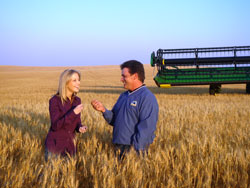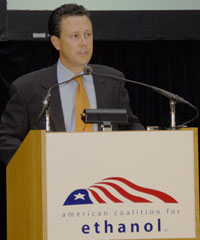 The latest Farm Computer Usage and Ownership report from USDA’s NASS was posted today with very little fanfare but I think it is very important to agricultural marketers! Following is the main summary of the report but there’s lots of data in there if you want to study and use it. I’m highlighting some key points in it for you.
The latest Farm Computer Usage and Ownership report from USDA’s NASS was posted today with very little fanfare but I think it is very important to agricultural marketers! Following is the main summary of the report but there’s lots of data in there if you want to study and use it. I’m highlighting some key points in it for you.
High-speed Internet access methods, such as DSL, cable, satellite, and wireless, have become much more available to Internet users in the farm sector since 2005. The proportion of operators using DSL doubled in 2007, at 27 percent, compared with the 2005 level of 13 percent. Cable, satellite, and wireless were each reported as the primary access methods on 7 percent of those U.S. farms with Internet access; with satellite and wireless methods both at virtually double their 2005 levels. Dialup was again the most common method of accessing the Internet, with nearly half (47 percent) of U.S. farms still using it, down from 69 percent in 2005.
A total of 55 percent of U.S. farms now have Internet access, compared with 51 percent in 2005. Sixty-three percent of farms have access to a computer in 2007, compared with the 2005 level of 59 percent. The proportion of U.S. farms owning or leasing a computer in 2007, at 59 percent, is up slightly from 55 percent in 2005. Farms using computers for their farm business increased 3 percentage points from 2005 to 35 percent in 2007.
In 2007, 80 percent of U.S. farms with sales and government payments of $250,000 or more have access to a computer, 78 percent own or lease a computer, 66 percent are using a computer for their farm business, and 75 percent have Internet access. For farms with sales and government payments between $100,000 and $249,999, the figures are: 70 percent have access to a computer, 66 percent own or lease a computer, 51 percent are using a computer for their farm business, and 61 percent have Internet access. For farms with sales and government payments between $10,000 and $99,999, 62 percent reported having computer access, 57 percent own or lease a computer, 36 percent use a computer for their farm business, and 53 percent have Internet access.
For crop farms, 64 percent have computer access and 37 percent use a computer for their farm business in 2007, up 4 and 3 percentage points from 2005, respectively. Internet access for crop farms has increased to 56 percent in 2007, compared to 52 percent in 2005. For livestock farms, 62 percent have computer access and 55 percent have Internet access. The use of a computer for farm business has increased to 33 percent for livestock farms, up 3 points from 2005.


 I love it when I see a group “get it.” I mean get this new media thing.
I love it when I see a group “get it.” I mean get this new media thing. Since I know how much this kind of information affects so many of you (me too) I thought you might want to see the latest USDA crop forecast information. Remember that you can hear an analysis of it each month from the
Since I know how much this kind of information affects so many of you (me too) I thought you might want to see the latest USDA crop forecast information. Remember that you can hear an analysis of it each month from the  One of the Pfizer Animal Health specialists we met this week at their media event in Kalamazoo was Dr. Gordon Brumbaugh. He’s an anti-infective specialist in their Cattle-Specialty Veterinary Operations.
One of the Pfizer Animal Health specialists we met this week at their media event in Kalamazoo was Dr. Gordon Brumbaugh. He’s an anti-infective specialist in their Cattle-Specialty Veterinary Operations.

 You can’t really argue that the waving wheat in the photo isn’t a beautiful amber color just like the national song talks about. That’s why North Dakota was featured on
You can’t really argue that the waving wheat in the photo isn’t a beautiful amber color just like the national song talks about. That’s why North Dakota was featured on  Now, when I say foods can talk, I don’t mean that an exquisitely prepared lobster is going to suddenly speak up and ask to be spared from a rumbling stomach. I’m talking about food with messages. Think of the corn fields in that sci-fi movie Signs… except, well, it’s not signs but words. And not fields of crops but food on your dinner plate.
Now, when I say foods can talk, I don’t mean that an exquisitely prepared lobster is going to suddenly speak up and ask to be spared from a rumbling stomach. I’m talking about food with messages. Think of the corn fields in that sci-fi movie Signs… except, well, it’s not signs but words. And not fields of crops but food on your dinner plate. Things are winding down here at the ACE Convention. Looking very relaxed this morning was the executive vice president of the
Things are winding down here at the ACE Convention. Looking very relaxed this morning was the executive vice president of the